Franz Josef Glacier aerial photosFranz Josef Glacier is the second of two of the best known glaciers of New Zealand. It was named after the Austrian Emperor, Franz Joseph I by the German explorer, Julius von Haast in 1865. Like the Fox Glacier, it descends from the Main Divide at over 3000 m above sea level down to the temperate rain forest of the West Coast region of South Island. Reached by a gravel road from Highway 6 and then a walk over the braided river plain, it is also popular with tourists. Access to the glacier terminus is restricted by ropes and warning notices, on account of the natural hazards in this area, but guided parties are given access to the glacier.
This collection of photographs illustrates the accumulation area of the glacier taken from the air. Another page shows features seen during guided walks on the glacier with Aberystwyth University students, and images of the snout, the proglacial area and the Waiho River from the main road crossing.
|
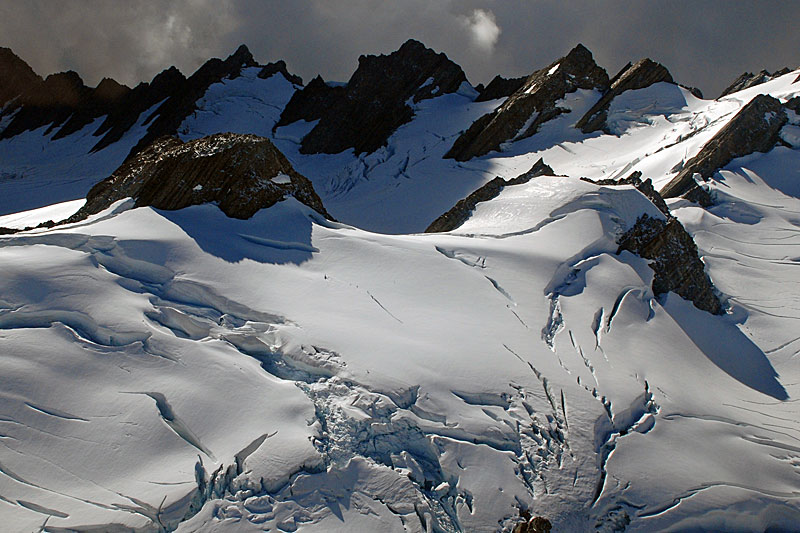 The accumulation area of Franz Josef Glacier illustrating bounding arêtes, bergschrunds and other irregular crevasses. Newton Rocks (2291 m) are in the foreground. | 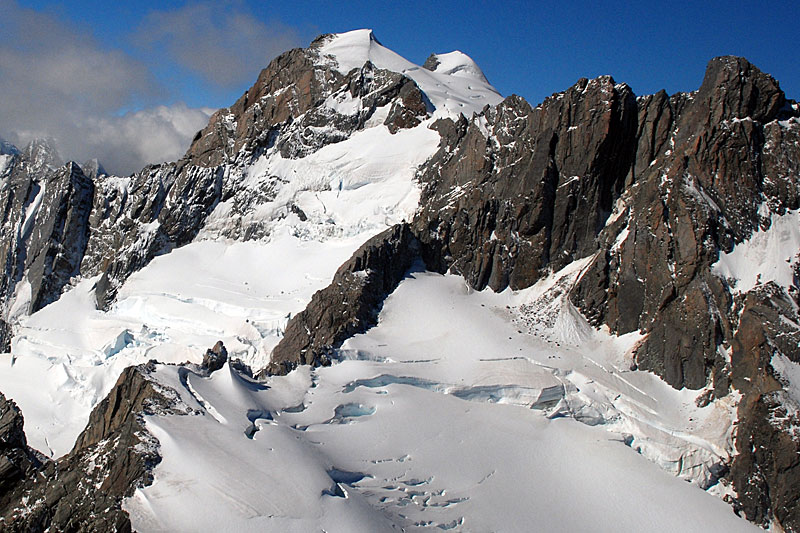 Bergschrunds in upper Franz Josef Glacier with the 3000 m-high Main Divide. | 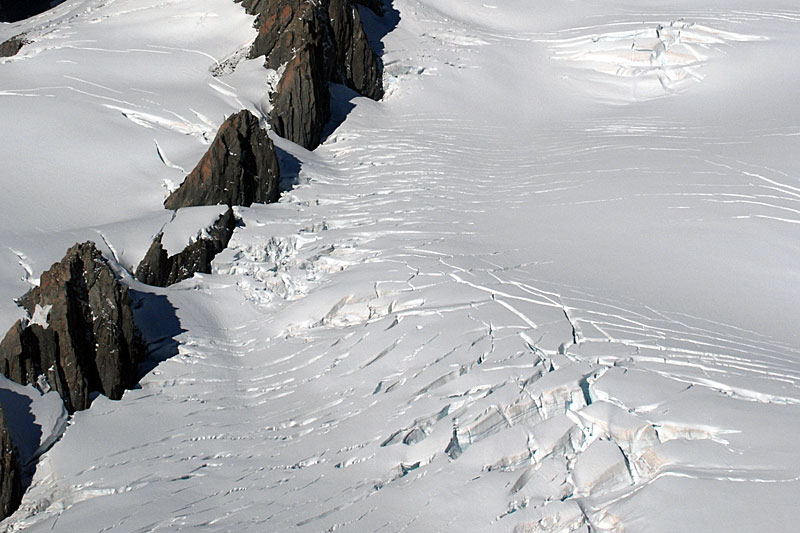 Intersecting crevasses reflecting ice flow over uneven bedrock. The arêtes here are almost buried by the accumulation area of Franz Josef Glacier. | 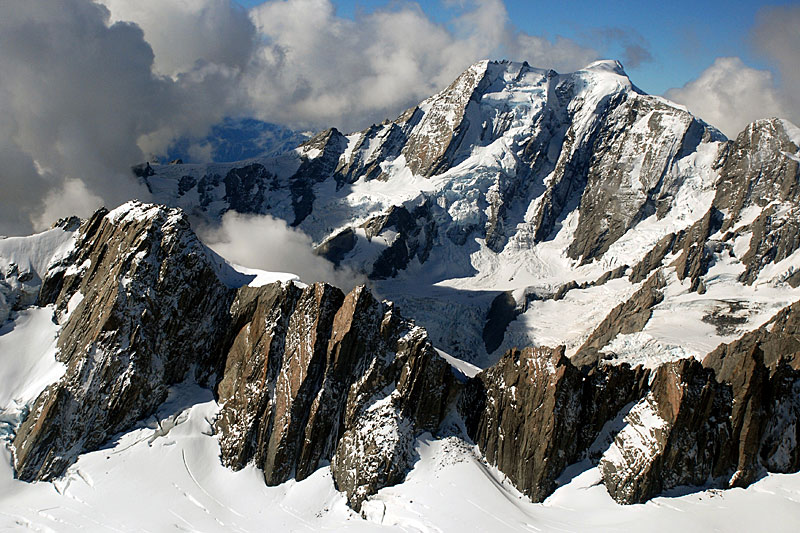 These arêtes carry hanging glaciers. The bedrock structure strongly controls how these rocks fracture; they are ‘greywackes’, slightly metamorphosed sandstone and mudstone. |
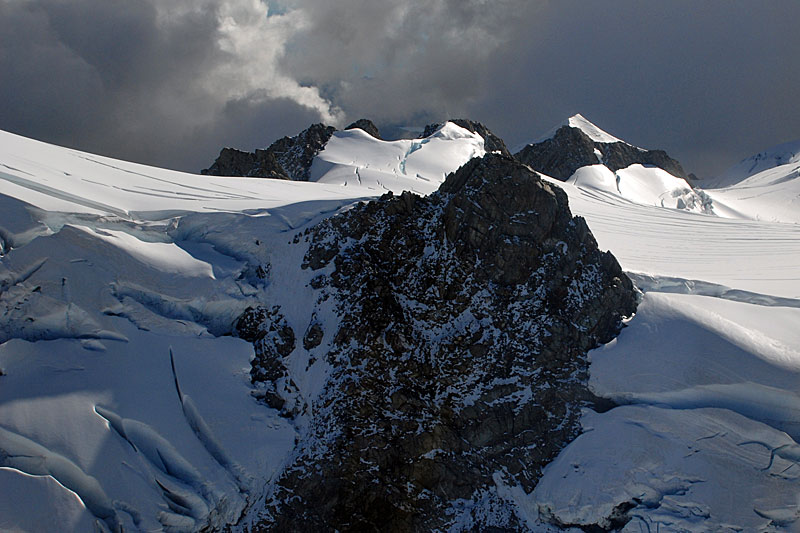 Glacier flow over a rock step on either side of this rock nunatak near the head of Franz Josef Glacier illustrates how ice is subject to so much tension that it peels away and partially collapses. | 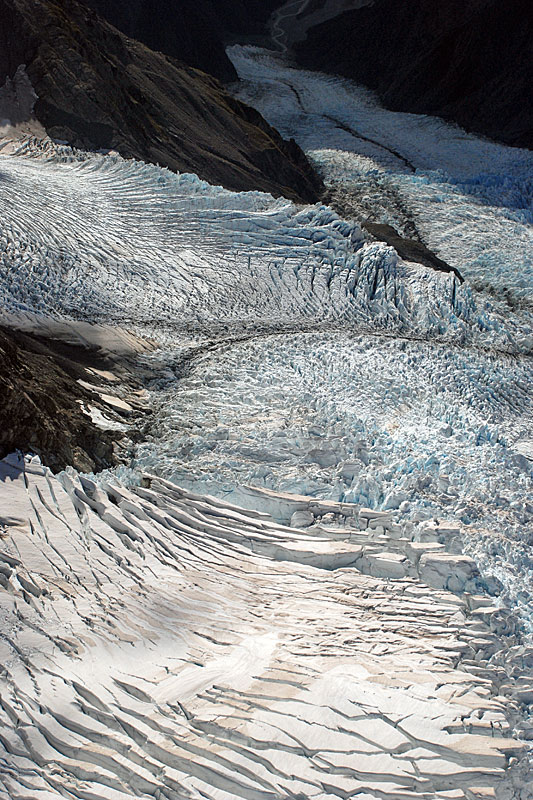 Converging flow units (streams of ice) with a medial moraine between them just above where the narrow tongue of Franz Josef Glacier begins on its true left side. As the ice flows downwards (towards the top of the picture) the ice accelerates, leading to increased crevassing and sérac formation. | 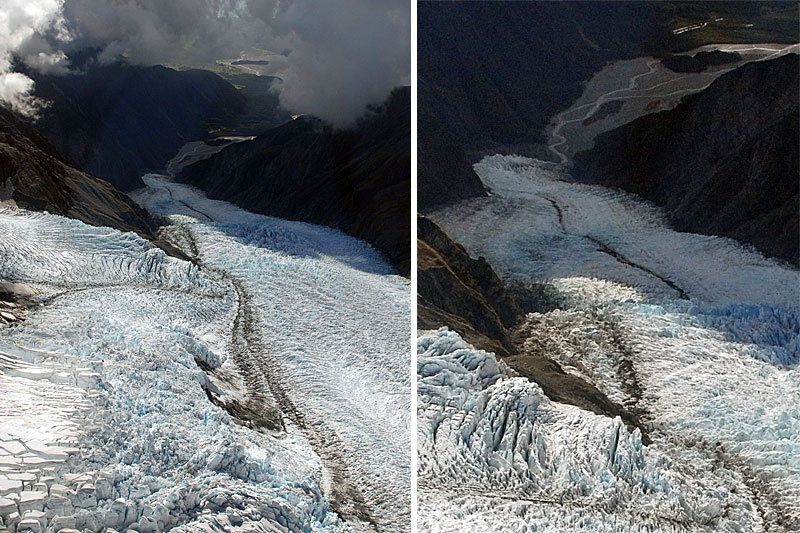 This image gives a broader view of converging flow units and Franz Josef Glacier tongue as far as the snout in the gloom of the rain forest and beyond. Bedrock shows through the ice, illustrating how thin the ice is at this point as it passes over a rock step. | 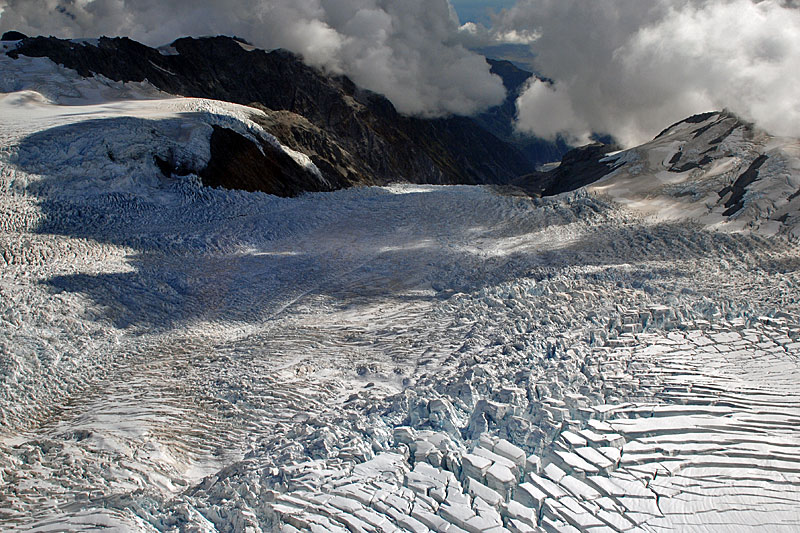 The convergence zone of several flow units in Victoria Glacier, which is connected to Franz Josef Glacier in its accumulation area. The ice surface here is a maze of intersecting crevasses and séracs. This glacier also flows down into rain forest, but its snout is relatively inaccessible. |
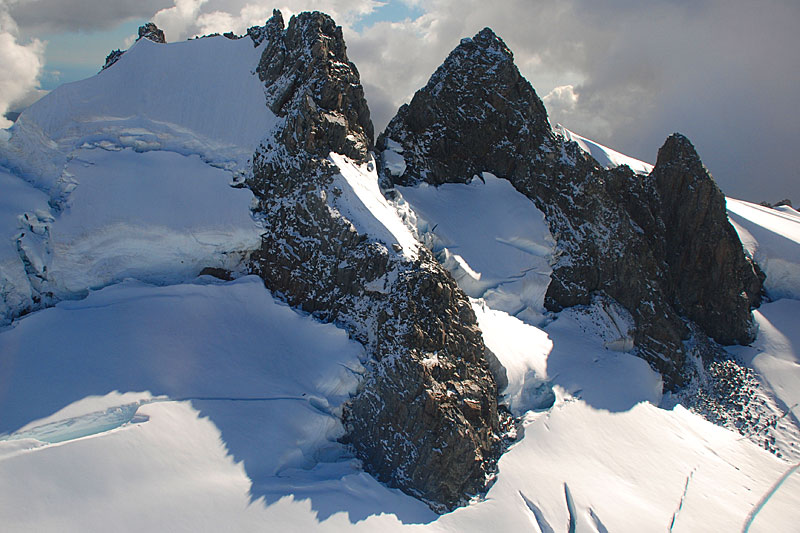 Bergschrunds and a serrated, pinnacled ridge in the upper reaches of Victoria Glacier, with Franz Josef Glacier behind the ridge. | 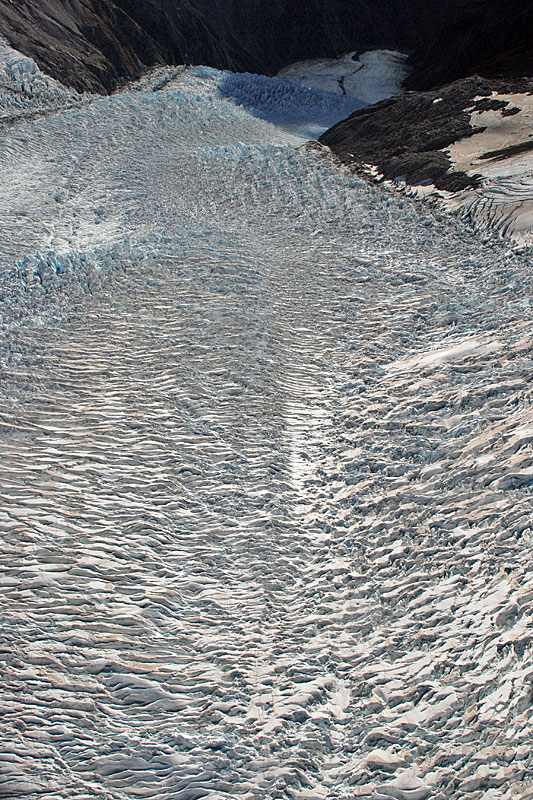 Another view of the crevasses and séracs in the upper tongue of Franz Josef Glacier, with a prominent shear margin between fast and slow-moving ice upper right. | 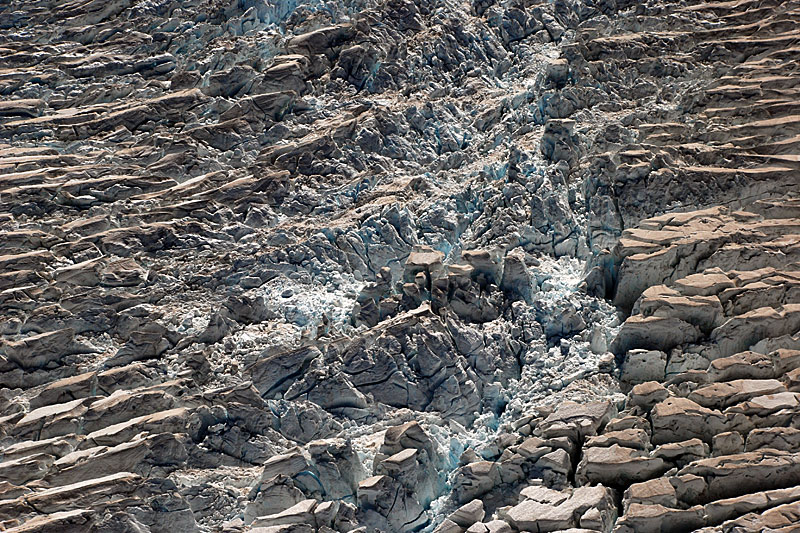 ‘Total crevassing’ in upper Franz Josef Glacier. Note the bluish area of collapse ice across the middle of the image. | 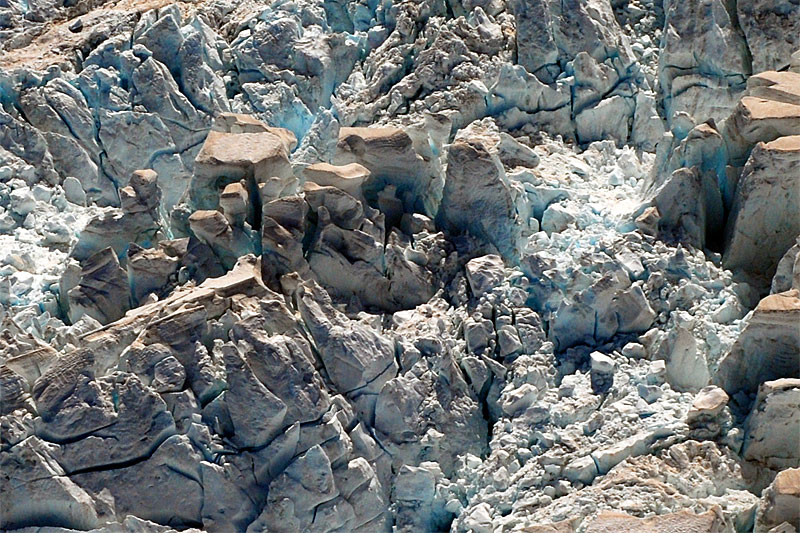 Enlarged section of the previous image. Note the colour contrast between the yellowish, dusty firn surface and the blue ice exposed in the crevasse walls. |
| Photos Michael Hambrey |